Gasagase Payasa is a notably serene and sumptuous dessert hailing from the South Indian culinary repertoire, particularly cherished in the states of Karnataka and parts of Tamil Nadu and Andhra Pradesh. The name ‘Gasagase’ is the Kannada term for poppy seeds, which are the star ingredient of this soothing dish. Payasa or Payasam, akin to the North Indian ‘kheer’, is a type of pudding typically made from milk, sugar, and various other ingredients that lend it a distinctive flavor.
At its core, Gasagase Payasa combines the nutty and slightly earthy notes of poppy seeds with the rich creaminess of coconut milk, subtly sweetened with jaggery or sugar. This dessert is further enhanced with the warmth of cardamom and sometimes, garnished with a sprinkle of nuts or raisins fried in a dab of ghee.
The preparation involves soaking the poppy seeds, along with rice and nuts (usually almonds or cashews), which are then ground into a fine paste. This paste forms the base of the Payasa, thickened with coconut milk and sweetened to taste. What sets Gasagase Payasa apart is not just its flavor but its reputed calming properties, attributed to the poppy seeds, making it a perfect end to a meal, especially during evenings or on cooler days.
Gasagase Payasa Recipe
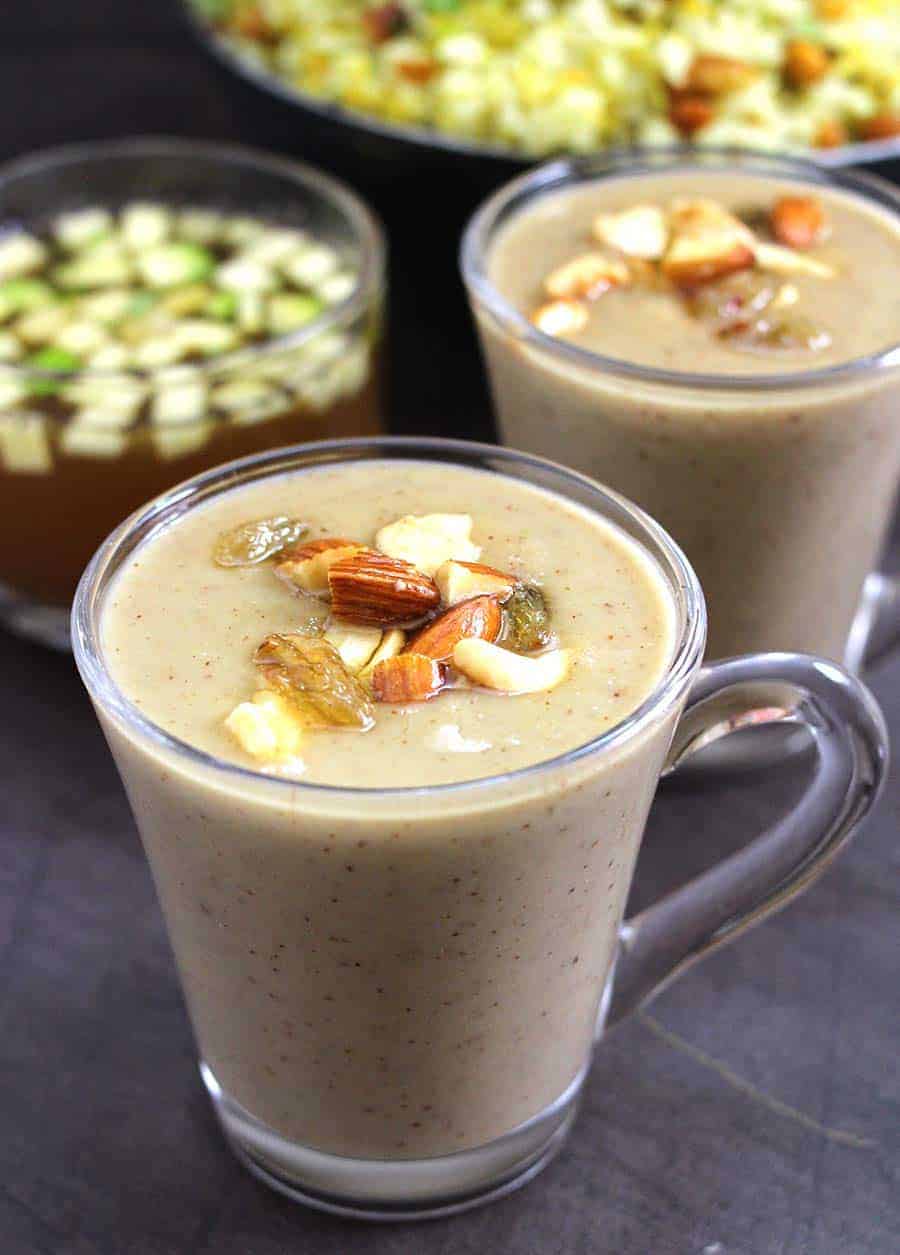
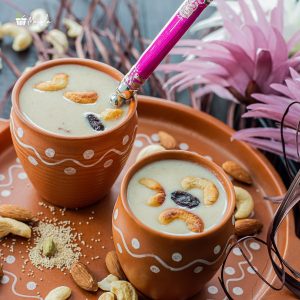
Gasagase Payasa
Equipment
- 1 small skillet
- 1 medium saucepan
Ingredients
- 3 tablespoons poppy seeds
- 1 tablespoon rice any variety
- 3 tablespoons shredded fresh coconut or frozen, thawed to room temperature
- 3 cups water divided
- 1 cup powdered jaggery
- 1/4 teaspoon ground cardamom
- 1 teaspoon ghee
- 5 cashews
- 5 raisins
Instructions
- Heat a small skillet over medium heat. Add the poppy seeds and rice and dry-roast for 3 to 4 minutes, until aromatic. Turn off the heat and stir in the coconut. Let cool. Transfer the mixture to a blender, add 1⁄2 cup of water, and blend until coarsely ground.
- Place a medium saucepan over medium heat and add the remaining 21⁄2 cups of water and the jaggery. Cook until the jaggery dissolves. Strain the jaggery water through a fine-mesh strainer set over a bowl to remove any impurities. Return the jaggery water to the pan and place it back over medium heat. Stir in the cardamom. Simmer for 5 minutes. Stir in the ground poppy seed mix and simmer for 5 minutes.
- In a small skillet over medium heat, melt the ghee.
- Add the cashews and raisins. Roast for about 1 minute, until the cashews turn brown. Turn off the heat and stir them into the pudding. Cool for several minutes, and serve warm.
Notes
Cooking Tips about Gasagase Payasa
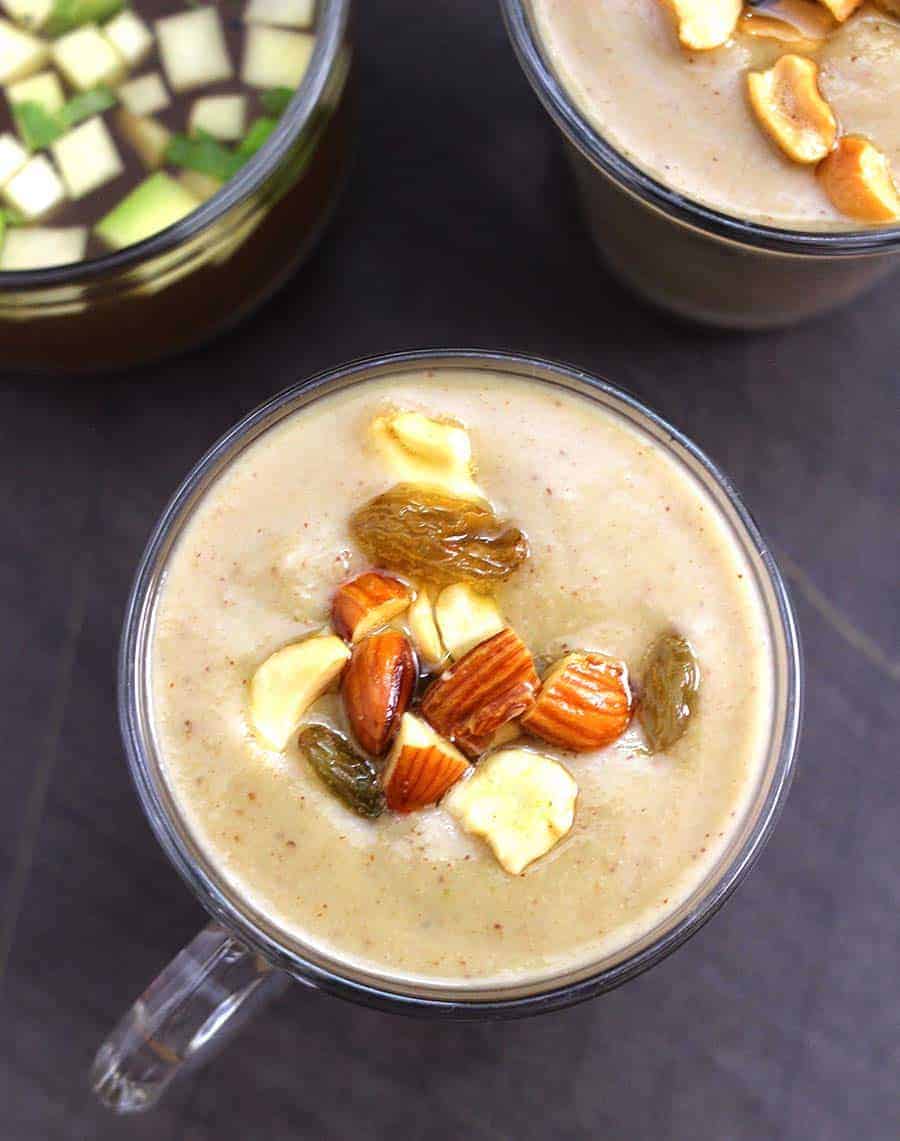
- Quality of Poppy Seeds: Ensure the poppy seeds (Gasagase) are fresh and of high quality for the best flavor. Older seeds may result in a bitter taste.
- Proper Soaking of Seeds: Soak the poppy seeds, along with any nuts (like almonds or cashews) and rice involved in the recipe, for at least 2 hours or overnight. This softens them and makes grinding easier, ensuring a smooth consistency in the Payasa.
- Grinding to Perfection: When grinding the soaked seeds and nuts into a paste, aim for a fine texture. This is crucial for achieving the distinctive creamy consistency. Consider adding a little water during the grinding process to help blend it smooth.
- Optimal Cooking Technique: Cook the ground paste on low heat with constant stirring to prevent it from sticking to the bottom of the pan. Patience is key here; the mixture should thicken gradually.
- Balancing Sweetness: Adjust the amount of jaggery or sugar based on your taste preference and the sweetness of the other ingredients. Adding the sweetener gradually while tasting can help you achieve the perfect balance.
- Use of Coconut Milk: Incorporate coconut milk towards the end of the cooking process to avoid curdling. If you’re looking for a richer flavor, use full-fat coconut milk.
- Spicing It Up: Cardamom powder is a must for its aromatic essence. Add it towards the end to ensure its fragrance and flavor remain potent.
- Consistency Matters: The Payasa should have a moderately thick consistency; too thin, and it loses its richness, too thick, and it might not be as enjoyable. Adjust with water or coconut milk as needed, remembering it thickens slightly upon cooling.
- Garnish Generously: Enhance the Payasa by garnishing with fried cashews or almonds and a few strands of saffron. These add not just to the taste but also make the dish visually appealing.
Serving suggestions about Gasagase Payasa
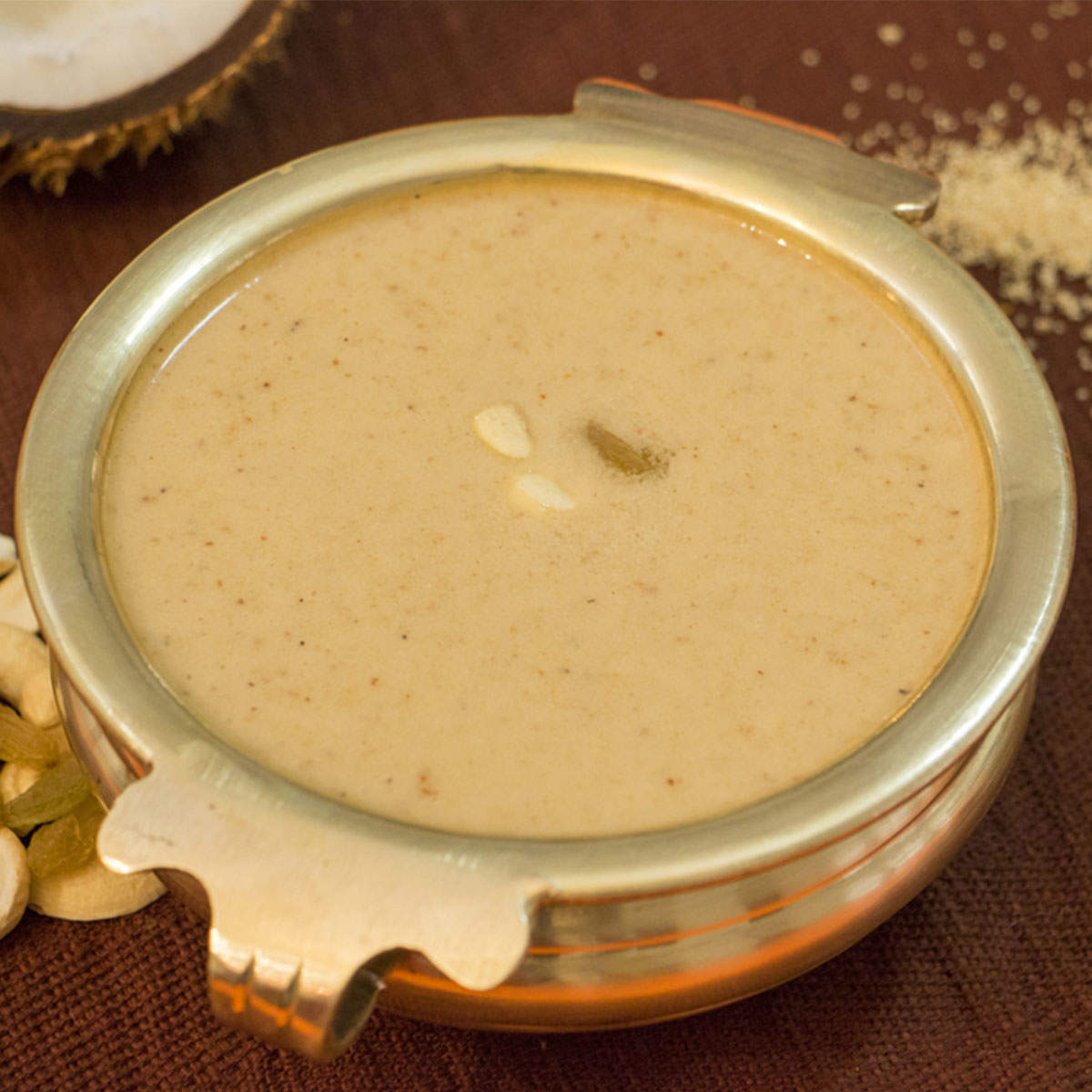
- Temperature Adjustments: One of the unique aspects of Gasagase Payasa is its adaptability to be served either warm or cold. On cooler days or during evenings, serving it slightly warmed can enhance the calming effects of poppy seeds while offering a cozy comfort. Conversely, during hot weather, a chilled bowl of Gasagase Payasa provides a refreshingly sweet respite, acting as a serene end to a meal.
- Garnishing for Enhanced Flavor and Appeal: Elevate your Gasagase Payasa by garnishing with a sprinkle of dried fruits like chopped almonds, cashews, or even a few strands of saffron just before serving. This not only adds a crunch but also an appealing look. A light drizzle of ghee-roasted nuts or raisins can amplify the richness of the dessert.
- Traditional Presentation: Embrace the cultural heritage by serving the Payasa in traditional earthenware or metal bowls. Serving in such traditional utensils can add an authentic touch and subtly influence the overall flavor experience by lending a hint of earthiness, especially when served in clay pots.
- Pairing with Mild Snacks: While Gasagase Payasa stands splendid as a dessert on its own, pairing it with non-spicy, mild savories can balance the palate. Consider serving it after a meal that includes subtle flavors to let the dessert shine as a soothing finale.
- Decorative Serve Ware: Whether you’re hosting a special occasion or enjoying a quiet meal at home, presenting the Payasa in elegant glassware or fine china can make the experience feel more indulgent. Layering the bottom of the serve ware with sliced fruits like banana or mango before pouring in the Payasa adds a hidden surprise both in taste and texture.
- Complement with a Beverage: After relishing the Gasagase Payasa, offering a light, warm beverage such as a cup of herbal tea or warm water infused with spices like cinnamon or cardamom can complement the dessert. This not only aids in digestion but also extends the warmth and tranquility provided by the dessert.
- Mindful Enjoyment: Finally, encourage the enjoyment of Gasagase Payasa in a calm setting, allowing its reputed calming properties to work most effectively. This holistic approach enhances not just the tasting experience but also contributes to a moment of serene indulgence.
Top 5 FAQs about Gasagase Payasa
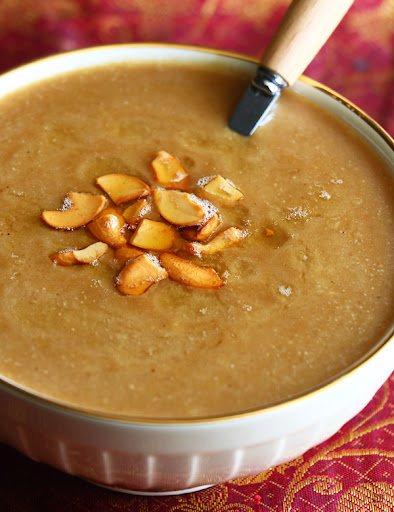
- What is Gasagase Payasa? Gasagase Payasa is a traditional South Indian dessert predominantly popular in Karnataka and parts of Tamil Nadu and Andhra Pradesh. It is made from poppy seeds (referred to as Gasagase in Kannada), which are soaked, ground with rice and nuts into a paste, and then cooked with coconut milk and sweetened with jaggery or sugar. It is flavored with cardamom and often garnished with nuts fried in ghee.
- Why is Gasagase Payasa considered calming or soothing? Poppy seeds, the main ingredient in Gasagase Payasa, are known for their natural sedative properties, making this dish reputed for its calming effects. It is especially enjoyed in the evenings or on cooler days for its ability to sooth and relax, making it not just a treat for the palate but also a comfort dish.
- Can Gasagase Payasa be made vegan? Yes, Gasagase Payasa can easily be adapted to a vegan diet. While the traditional recipe itself is largely plant-based, using coconut milk instead of dairy milk, ensuring that the sweetener (jaggery or sugar) is vegan and substituting ghee used for frying garnishes with a plant-based oil can make the dessert completely vegan.
- How should Gasagase Payasa be served? Gasagase Payasa can be served either warm or cold, depending on personal preference and weather conditions. Serving it slightly warm is ideal for enhancing its soothing effects, especially during cooler months. On warmer days, serving it chilled can provide a refreshingly sweet end to a meal.
- Where can I find the ingredients for Gasagase Payasa? Most of the ingredients required to make Gasagase Payasa, such as poppy seeds, coconut milk, jaggery or sugar, and cardamom, can be found at Indian grocery stores or specialty food markets. Online retailers may also stock these ingredients, making it accessible to those not residing near physical stores that carry South Asian food supplies.
Gasagase Payasa stands as a testament to the rich culinary heritage of Southern India, especially hailed in regions like Karnataka, Tamil Nadu, and Andhra Pradesh. This dessert, rooted deeply in traditional practices, not only offers a delectable taste experience but also carries with it the soothing and calming effects attributed to its primary ingredient, poppy seeds. In every spoonful, Gasagase Payasa embodies the simplicity, nourishment, and tranquility that is often sought after in a comfort dish.

Leave a Reply